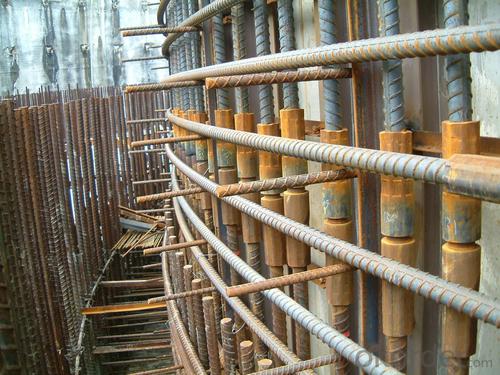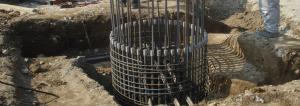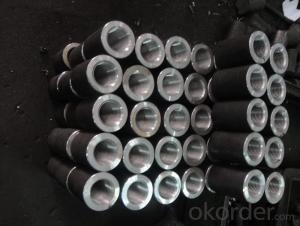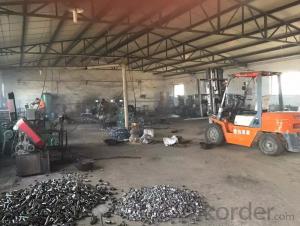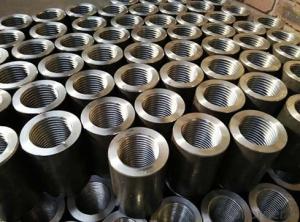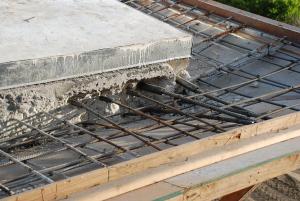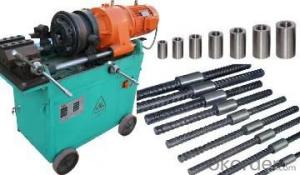Steel Coupler Rebar Scaffolding Construction Frame Scaffolding Made in China
- Loading Port:
- Shanghai
- Payment Terms:
- TT OR LC
- Min Order Qty:
- 1000 pc
- Supply Capability:
- 10000000 pc/month
OKorder Service Pledge
OKorder Financial Service
You Might Also Like
Steel Coupler Rebar Scaffolding Construction Frame Scaffolding Made in China
1.Description:
Lapped joints are not always an appropriate means of connecting rebar. The use of Steel Rebar Couplers can simplify the design and construction of reinforced concrete and reduce the amount of reinforcement required.
The threaded steel coupler system is designed as a threaded reinforcement connection with 100% load transmission. The steel coupler rebar connection system is suitable for both static and dynamic load transmission in construction joints.
The coupler is designed as a threaded reinforcement connection for formed construction joints. Reinforcement work is normally carried out on both sides of the construction joint using lap joints or one side is anchored. The bar lengths are based on the structural analysis requirements of the building component and are calculated from anchorage and lap lengths.
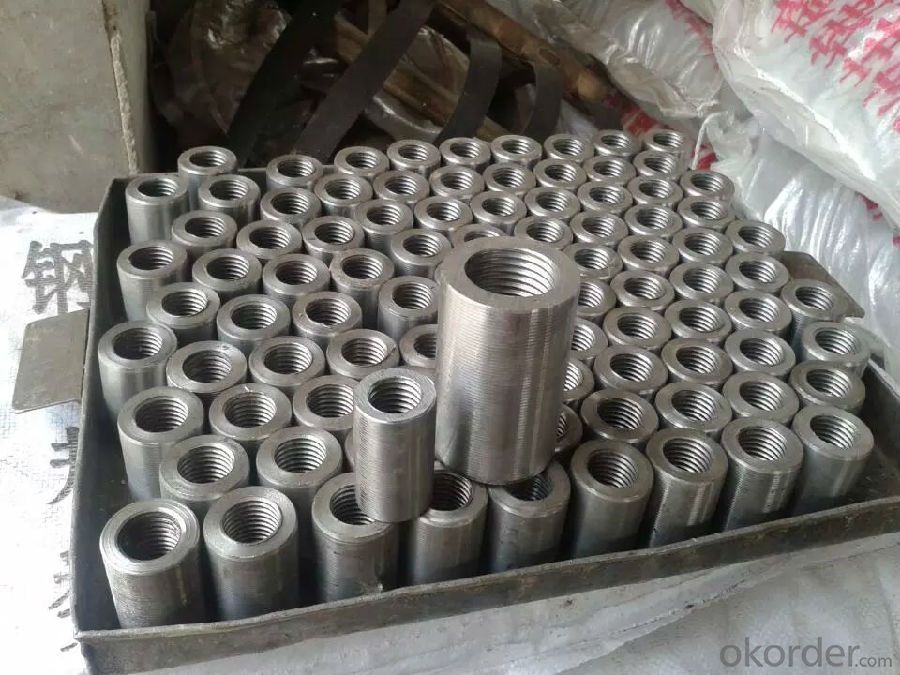

2.Advantages of Steel Coupler Rebar Lift Scaffolding Galvanized Scaffolding Tube with Low Price:
The coupler system provides the opportunity to connect rebars quickly, easily and cost effectively, even when large rebar diameters are used. This makes the steel coupler rebar range a logical extension to our rebendable CNBM reinforcement continuity system for rebars over 12 mm.
3.Available sizes of Steel Coupler Rebar Lift Scaffolding Galvanized Scaffolding Tube with Low Price:
14mm,16mm,18mm,20mm,22mmm,25mm,28mm,32mm,36mm,40mm
4.Delivery:
Delivery Term: FOB / CFR / CIF available.
Delivery Time: 15 days or less after order confirmed.
5.Why choose us?
Technical Expertise
Experienced Management
Stringent Quality Control
Exemplary Service
On-Time Delivery
Wide Product Range
Competitive Pricing
Huge branch network capable of catering worldwide
- Q: Can steel formwork be used for curved or irregular shapes?
- Yes, steel formwork can be used for curved or irregular shapes. Its flexibility allows it to be easily shaped and adjusted to create the desired form.
- Q: What are the common durability issues with steel formwork systems?
- Steel formwork systems can encounter various durability issues. One major concern is corrosion, which arises when the steel comes into contact with moisture or harsh chemicals. If not addressed correctly, corrosion can weaken the formwork system's structural integrity and lead to premature failure. Another issue is wear and tear. Over time, repeated use of steel formwork systems can result in surface damage and deformation. This can create challenges in achieving precise and accurate concrete finishes, as well as pose safety risks for workers. Furthermore, mishandling and improper storage of steel formwork systems can cause bending or warping of the components. This can impact the overall stability and efficiency of the system, reducing its durability and reliability. Lastly, neglecting maintenance and failing to apply protective coatings can contribute to durability problems. Regular inspections, cleaning, and the application of protective coatings can prevent corrosion and prolong the lifespan of the steel formwork system. In conclusion, common durability issues with steel formwork systems encompass corrosion, wear and tear, mishandling and improper storage, and inadequate maintenance. Promptly addressing these concerns and implementing appropriate maintenance practices are crucial to ensure the longevity and effectiveness of the formwork system.
- Q: How does steel formwork impact the overall sustainability of a project?
- Steel formwork can have a significant impact on the overall sustainability of a project. Firstly, steel is a highly durable material that can withstand repeated use, which means that steel formwork can be reused multiple times before reaching the end of its life cycle. This reusability reduces the need for frequent replacements, minimizing the consumption of materials and the waste generated during construction. Additionally, steel formwork is known for its strength and structural stability, allowing for the construction of robust and long-lasting structures. This means that buildings constructed with steel formwork are more likely to have a longer lifespan, reducing the need for frequent renovations or demolitions. Consequently, this leads to a decrease in the consumption of resources and the associated carbon emissions that come with new construction. Moreover, steel is a highly recyclable material, and steel formwork can be easily recycled at the end of its life cycle. The recycling process of steel requires less energy compared to the production of new steel, thereby reducing the carbon footprint of a project. By choosing steel formwork, construction projects can contribute to the circular economy by promoting the use of recycled materials and reducing landfill waste. Furthermore, steel formwork offers enhanced efficiency in construction processes. Its modular nature and ease of assembly make it a time-saving option, reducing construction time and, consequently, the energy consumption required for on-site operations. The accelerated construction process also minimizes disruption to the surrounding environment, reducing the overall environmental impact of the project. Lastly, steel formwork can contribute to the overall sustainability of a project by providing a safer working environment for construction workers. Its strength and stability ensure that the formwork remains secure during concrete pouring, minimizing the risk of accidents and injuries. This promotes the well-being of workers and aligns with the principles of social sustainability. In conclusion, steel formwork positively impacts the overall sustainability of a project by minimizing material consumption, reducing waste generation, promoting recycling, enhancing construction efficiency, and providing a safer working environment. Its durability, reusability, and recyclability contribute to the conservation of resources, reduction of carbon emissions, and long-term viability of structures. By opting for steel formwork, construction projects can advance sustainability goals and contribute to a more environmentally and socially responsible built environment.
- Q: What is the difference between the steel template and the assembled steel template?
- Why do you think I would like to set up a template for artificial labor costs higher than the stereotypes of the general template workers are square but the combination of the template construction is more difficult to be expensive so normal
- Q: Can steel formwork be used in areas with high chemical exposure?
- While steel formwork can be utilized in areas characterized by high levels of chemical exposure, it may not necessarily be the most optimal selection. Although steel is generally recognized as a resilient and robust substance, it is prone to corrosion upon encountering specific chemicals. In situations where the chemicals prevalent within the vicinity are known to induce corrosion in steel, it is advisable to contemplate alternative formwork materials like plastic or aluminum, which possess a higher resistance to chemical exposure. Moreover, it is feasible to enhance the steel formwork's chemical resistance by applying protective coatings or treatments. Nonetheless, it is crucial to thoroughly assess the particular chemicals and their concentration within the area in order to ascertain the most suitable formwork material for the project.
- Q: Are there any specific considerations for using steel formwork in areas with limited space?
- Yes, there are several specific considerations for using steel formwork in areas with limited space. Firstly, the dimensions of the steel formwork system should be carefully chosen to ensure that it can fit into the available space. This includes considering the height, width, and depth of the formwork components, as well as any necessary clearances for movement and installation. Secondly, the assembly and disassembly of the steel formwork system should be carefully planned to minimize the space required. This may involve using smaller formwork panels or modular systems that can be easily transported and maneuvered in tight spaces. Additionally, the sequencing of formwork removal should be considered to ensure that there is enough space for workers and equipment to safely access the area. Thirdly, the storage of steel formwork components when not in use should be taken into account. In areas with limited space, it may be necessary to stack the formwork panels vertically or utilize compact storage solutions to maximize space efficiency. Lastly, the accessibility of the construction site should be considered. In areas with limited space, it may be challenging to transport and deliver the steel formwork components. It is important to evaluate the availability of access roads, parking areas, and equipment staging areas to ensure that the steel formwork can be safely and efficiently delivered to the construction site. Overall, using steel formwork in areas with limited space requires careful planning and consideration of the dimensions, assembly, disassembly, storage, and site accessibility. By addressing these specific considerations, it is possible to effectively utilize steel formwork systems in tight spaces while ensuring the safety and efficiency of the construction process.
- Q: What are the considerations when designing steel formwork for retaining walls?
- When it comes to designing steel formwork for retaining walls, it is crucial to take several important factors into account: 1. Structural stability is of utmost importance. The steel formwork must be able to withstand the lateral pressure exerted by the retained material. To achieve this, it is essential to incorporate adequate thickness, reinforcement, and bracing. 2. The formwork should also have the necessary load capacity to support the weight of the concrete and any additional loads during construction. It should be able to withstand these loads without any deformation or failure. 3. Durability is another key consideration. Retaining walls are exposed to various environmental conditions, so the steel formwork must be designed to resist corrosion, rust, and other forms of deterioration. This can be achieved by using corrosion-resistant steel or applying protective coatings. 4. The design should also prioritize ease of construction. The steel formwork should be structurally sound yet easy to install and remove. This will save time and labor during construction. 5. Flexibility is essential as retaining walls can have different geometries and dimensions. The steel formwork should be flexible enough to accommodate these variations. Adjustable connections or modular components can be used to achieve this flexibility. 6. Safety is of utmost importance. Proper consideration should be given to fall protection, access, and working platforms to ensure the safety of workers during construction. 7. Lastly, cost-effectiveness should be optimized. The design should minimize material usage and labor costs while still meeting the required strength and durability. Standard sizes and components, as well as reusable elements, can help achieve this goal. By considering these factors, designers can ensure that the steel formwork for retaining walls is not only structurally sound and durable but also efficient and cost-effective.
- Q: What are the different safety features incorporated in steel formwork systems?
- Some common safety features incorporated in steel formwork systems include sturdy and durable construction materials, non-slip surfaces, guardrails and handrails for secure movement, proper anchoring mechanisms to prevent collapse, and clear signage to indicate potential hazards and safety precautions. Additionally, some systems may also have built-in fall protection systems or safety harness attachment points for added worker safety.
- Q: Types of building templates? What is the clear water template
- 1 plastic template: at present, there are many companies to develop a variety of plastic template, such as hard template, reinforced plastic wood plastic composite template, GMT plastic, plastic and plastic floor template template template system, reduce wood cutting, replacing the traditional technology with new technology, I believe the future will be used widely used in building materials industry.
- Q: What is the weight of steel formwork?
- The weight of steel formwork can vary depending on its size and thickness. However, on average, steel formwork typically weighs around 20 to 25 kilograms per square meter.
Send your message to us
Steel Coupler Rebar Scaffolding Construction Frame Scaffolding Made in China
- Loading Port:
- Shanghai
- Payment Terms:
- TT OR LC
- Min Order Qty:
- 1000 pc
- Supply Capability:
- 10000000 pc/month
OKorder Service Pledge
OKorder Financial Service
Similar products
Hot products
Hot Searches
Related keywords


